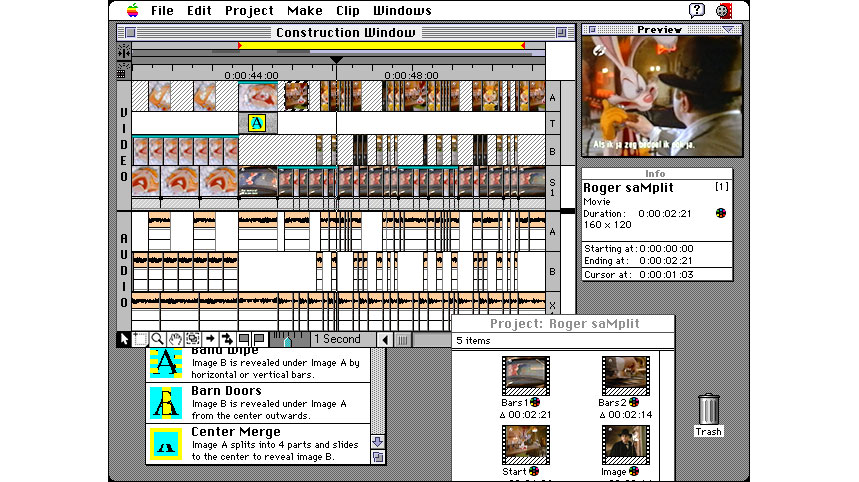In 1997 I produced several audio-visual tracks with Premiere Pro solely, so without music software. This led to a different composition style. These compositions have more complex arrangements with many samples, wilder but less funky grooves and consist of only one or two audio-visual layers.
Colour!
Thanks to the success of the first Eboman E.P. and performances I was able to upgrade my studio in the summer of 1996 and buy a 7600 Apple Macintosh with a Miro Motion DC-20 video capture card and Adobe Premiere 4.0. Making audio-visual compositions was much easier now. Premiere had no limit to the amount and length of videos I could use, the Miro card made it easy to capture video and everything worked in colour!

Hand work
But working with Premiere had (and still has) some big disadvantages as opposed to my home-made video sampler: editing with Premiere doesn’t work in real-time, so you can not use a music sequencer to control Premiere. Besides that, Premiere uses a ‘frame-based’ timing, that means that the timeline of Premiere is divided into small blocks of 40 milliseconds (the length of a video frame in PAL format) and all edits will snap to that grid. In music, timing is super important, so having to fit all my edits within this grid made it difficult to edit in a musical way.
Another big shortcoming of Premiere 4.0 was that it didn’t allow for copy-pasting multiple edits at the same time. Editing in a musical way therefore involved a lot of manual work. Repetition is a common concept in music, so being able to copy/paste multiple edits would have been very useful. Every edit had to be done by hand over and over again!

Tracks
My first experiments were done completely with Premiere, with a focus on rhythmical video editing. Because I had to fit my edits into the frame grid, the timing of these tracks are less groovy than my other work. BasebaLL breaxXx was the first experiment, Roger saMplit and Naked Gabba were the last ones. These tracks have an electro-gabber-techno feel, which works well with a frame grid. I liked this hardcore video sampling style and continued working with this concept in the ‘Violent Entertainment‘ project.
An interesting consequence of working with action movies is that it is difficult to use multiple sounds at the same time, because the sound from these movies is very rich (many loud things happen at the same time). The challenge is then to make a complete composition using one layer of video. Roger Samplit (see below) is a good example of that. Naked Gabba too (although Flava Flav is a second layer).
Fort Ebo GoLd is created using this same concept. After that project I started searching for other, less time consuming, techniques, like working with X-Pose (V-skrtZz, d DriVer must be a MAdMaN), Image/ine (SenSorSuit 1.0, DVJ 2.0, Containment) and developing my own software, now EboSuite.
